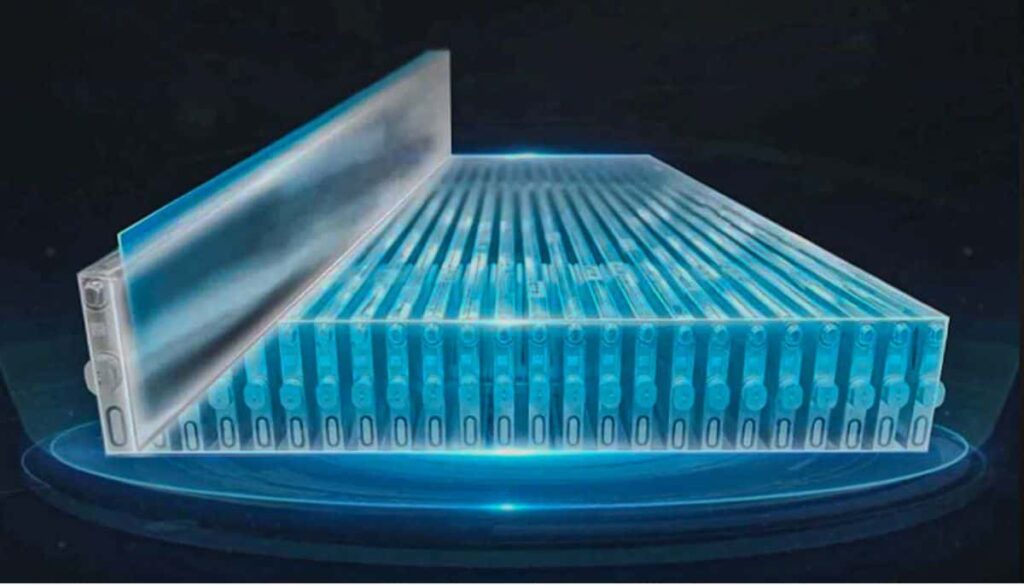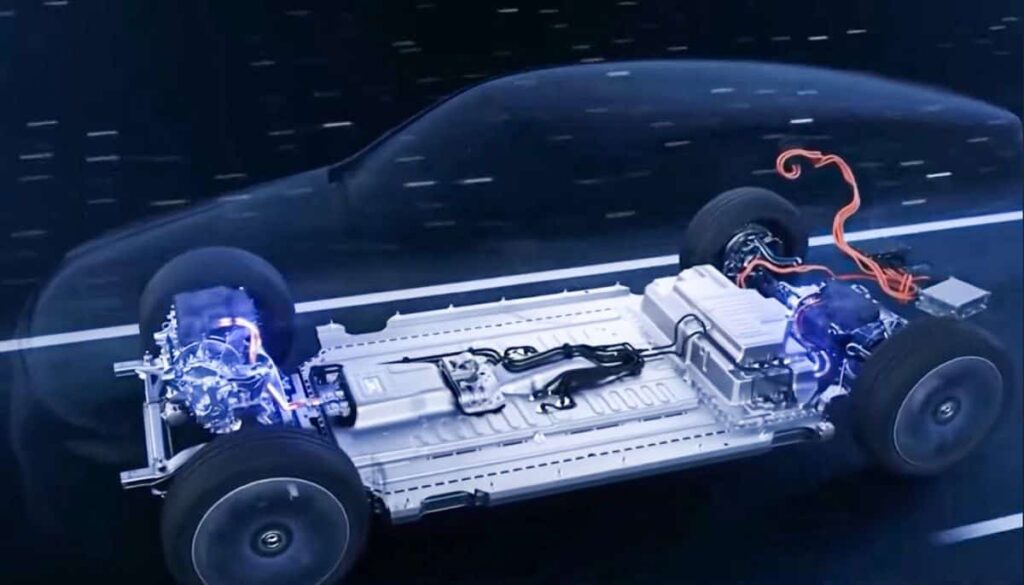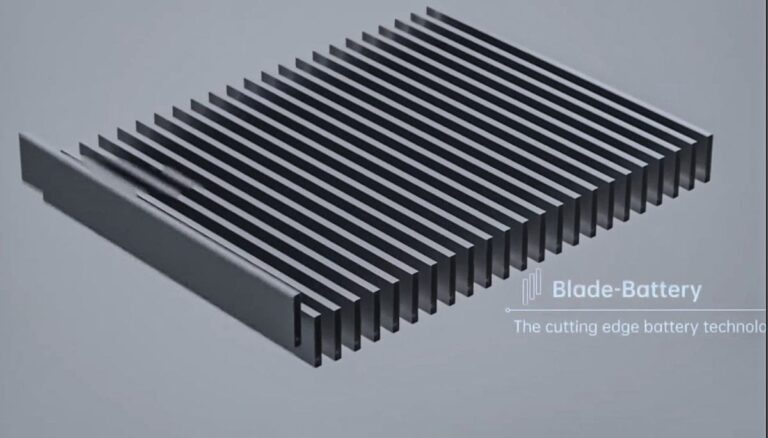In the world of electric vehicles (EVs) and energy storage, battery technology plays a crucial role in shaping the performance, safety, and longevity of the products. Among the many advancements in battery technology, the BYD Blade Battery Cell stands out as one of the most innovative solutions developed by BYD, a leading Chinese electric vehicle manufacturer.
The Blade Battery uses Lithium Iron Phosphate (LFP) chemistry, providing a safer and more efficient alternative to traditional battery technologies. In this article, we will take an in-depth look at the BYD Blade Battery Cell, its features, advantages, and applications, to help you understand why it’s considered a game-changer in the world of electric mobility and energy storage.
What is the BYD Blade Battery Cell?
The BYD Blade Battery is a lithium iron phosphate (LFP) battery cell designed by BYD. The unique blade-shaped design of the battery cells offers several advantages over traditional prismatic or cylindrical battery designs, making it more space-efficient and enhancing the overall safety of the battery pack.
The Blade Battery has been engineered to meet the growing demand for safer, more efficient, and longer-lasting batteries for electric vehicles (EVs) and energy storage systems. With its advanced design, the BYD Blade Battery is an ideal solution for manufacturers and consumers looking for reliable, high-performance battery technology.
Key Features of the BYD Blade Battery Cell
1. Enhanced Safety
One of the standout features of the BYD Blade Battery is its safety. LFP batteries are well-known for their thermal stability, and the blade design further enhances this characteristic. The Blade Battery is fire-resistant and has passed numerous rigorous safety tests. It has been shown to withstand impacts, overcharging, and high temperatures without catching fire or releasing harmful gases, which is a common issue with other lithium-ion chemistries.

2. Compact and Space-Efficient Design
The Blade Battery’s blade-shaped cells are thinner and longer than traditional battery cells. This allows for better use of space within the battery pack, resulting in more compact and efficient battery designs. The space-saving design leads to better energy density and helps reduce the overall weight of the battery pack.
3. Longer Lifespan
The BYD Blade Battery is designed for durability and longevity. LFP chemistry is well-regarded for its ability to handle more charge-discharge cycles without significant degradation in performance. With an expected life of over 1,000 charge cycles, the Blade Battery can last for up to 10 to 15 years, making it a cost-effective option for electric vehicles and energy storage systems.
4. Improved Energy Density
While LFP batteries are generally considered to have lower energy density compared to other lithium-ion chemistries, the BYD Blade Battery still offers competitive performance with energy densities of around 160 Wh/kg and 140–150 Wh/L. This translates to sufficient range for many electric vehicles, typically offering 300-500 km of range on a single charge, depending on the vehicle and driving conditions.

Read more:
BYD Sealion 7 electric SUV: Safety, Feature & Battery Life
5. Fast Charging Capabilities
The Blade Battery supports fast charging, reducing the time needed to recharge the battery pack. Under ideal conditions, the BYD Blade Battery can be charged up to 80% in under 30 minutes, making it convenient for drivers who need a quick recharge on long trips or in commercial applications.
6. Environmental Friendliness
BYD’s Blade Battery is designed with sustainability in mind. LFP chemistry does not use cobalt or nickel, two materials that are often linked to environmental and ethical concerns in traditional lithium-ion batteries. This makes the Blade Battery a more environmentally friendly option for electric vehicles, contributing to BYD’s goal of creating a greener and more sustainable future.
Applications of the BYD Blade Battery Cell
1. Electric Vehicles (EVs)
The primary application of the BYD Blade Battery is in electric vehicles. The Blade Battery is used in various BYD EV models, such as the BYD Dolphin and BYD Blade EV, which leverage the battery’s long lifespan, high safety standards, and efficient performance. It also makes EVs more affordable by reducing overall battery pack costs while maintaining high standards for safety and efficiency.
2. Energy Storage Systems (ESS)
The BYD Blade Battery can also be integrated into energy storage systems (ESS) used for solar and wind energy storage. Its long cycle life, fast charging, and high efficiency make it ideal for both residential and commercial energy storage applications, providing a reliable backup power source and helping to stabilize the grid.
3. Public Transportation
BYD’s electric buses are also powered by Blade Batteries, offering a safe and reliable power source for commercial fleets. The long-lasting nature of the Blade Battery is crucial for public transportation, where battery reliability and efficiency are top priorities.

Latest Advancements in the BYD Blade Battery
As of 2025, BYD has continued to improve the performance of the Blade Battery. The latest advancements include:
- Increased Energy Density: Ongoing research and development efforts have improved the energy density of the Blade Battery, allowing electric vehicles to travel even longer distances on a single charge.
- Faster Charging: With advancements in charging technology, the Blade Battery now charges even faster, reducing the downtime for EVs and ensuring that vehicles can get back on the road quickly.
- Cost Reduction: As production scales up and new manufacturing techniques are introduced, the cost of the Blade Battery continues to decrease, making it an even more affordable option for consumers and manufacturers.
Conclusion
The BYD Blade Battery Cell represents a significant leap forward in battery technology for electric vehicles and energy storage systems. With its enhanced safety, long lifespan, compact design, and fast charging capabilities, the Blade Battery offers a reliable and cost-effective solution for the future of clean energy and transportation. Whether for electric vehicles, energy storage, or public transportation, the Blade Battery is leading the way in making electric mobility safer, more efficient, and more sustainable.

Key Benefits:
- Exceptional Safety with fire-resistant properties.
- Long Lifespan of up to 10-15 years.
- Compact and Efficient design for better space utilization.
- Fast Charging for reduced downtime.
- Environmentally Friendly, without the use of cobalt and nickel.
FAQ about BYD Blade Battery
What is the main advantage of the BYD Blade Battery over traditional lithium-ion batteries?
The main advantage of the Blade Battery is its safety. It uses LFP chemistry, which is more stable and less prone to fires or thermal runaway, compared to other types of lithium-ion batteries.
How long does the BYD Blade Battery last?
The BYD Blade Battery has an expected lifespan of over 1,000 charge cycles, which translates to around 10-15 years of usage, depending on how frequently it is charged.
How fast does the BYD Blade Battery charge?
Under ideal conditions, the Blade Battery can be charged to 80% in less than 30 minutes, making it suitable for fast recharging in both private and commercial EVs.
Is the BYD Blade Battery environmentally friendly?
Yes, the Blade Battery is considered more environmentally friendly because it does not use harmful materials like cobalt or nickel, which are typically associated with negative environmental impacts.

